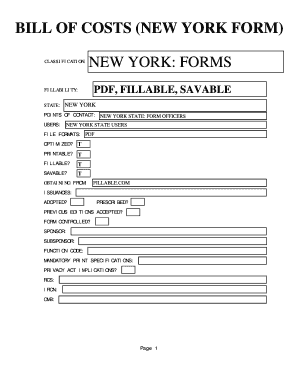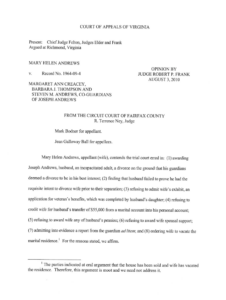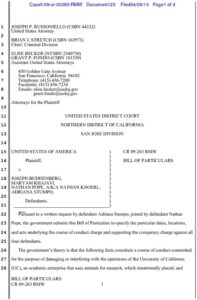Navigating the financial aspects of legal proceedings can often feel like deciphering a complex puzzle. Beyond the intense legal arguments and court appearances, there’s the crucial task of accounting for all the professional services rendered and expenses incurred. This is where the legal bill of costs comes into play, serving as a meticulously detailed statement outlining all the recoverable costs from one party to another following a court order or settlement.
It’s not merely a list of charges; it’s a formal document that demands precision, clarity, and adherence to specific legal rules. Preparing one incorrectly can lead to delays, disputes, or even the disallowance of legitimate expenses. Understanding its components and the best way to compile it is essential for any legal professional aiming for accurate cost recovery.
Understanding the Components of a Legal Bill of Costs
A legal bill of costs is far more than a simple invoice; it’s a comprehensive breakdown of all the financial outlays involved in a legal case, presented in a format that allows for scrutiny and formal assessment. Its primary purpose is to justify and recover the legal fees and disbursements from the losing party or as part of a settlement agreement. Accuracy and thoroughness are paramount, as every item may be challenged and reviewed by the opposing party or the court itself.

Typically, a bill of costs is divided into several key categories. The largest portion usually comprises professional fees, which are the charges for the time and expertise of the lawyers, paralegals, and other legal professionals involved in the case. These fees are usually calculated based on hourly rates for different grades of fee earners, multiplied by the time spent on various tasks, such as drafting documents, attending court, conducting research, and client consultations.
Another significant component consists of disbursements. These are out-of-pocket expenses incurred by the legal team on behalf of the client during the course of the litigation. Common examples include court filing fees, expert witness fees, barrister’s fees, travel expenses, photocopying charges, postal costs, and charges for obtaining documents like medical records or police reports. Each disbursement must be clearly itemized, often with supporting receipts or invoices, to demonstrate its necessity and validity.
Additionally, the bill may include value-added tax (VAT) if applicable, and potentially success fees or uplift percentages in certain conditional fee arrangements, provided they comply with specific regulations. The entire document must be structured to provide a clear, chronological, and itemized account of all work done and expenses paid, ensuring that it stands up to rigorous examination during a costs assessment hearing.
Key Elements to Include in a Bill of Costs
- Client and matter details, including case name and court reference.
- A clear, chronological breakdown of services rendered, detailing dates, precise descriptions of work performed, and time spent on each task by specific fee earners.
- An itemized list of all disbursements, complete with dates, descriptions, and the exact amount of each expense.
- Summary totals for professional fees, disbursements, and any applicable VAT or other additions.
- Certification by the solicitor or other authorized party, confirming the accuracy and validity of the costs claimed.
Why Using a Legal Bill of Costs Template Matters
In the demanding world of legal practice, efficiency and precision are not just desirable; they are essential. This is especially true when it comes to the intricate process of cost recovery. Relying on a robust legal bill of costs template can transform what is often a time-consuming and error-prone task into a streamlined, accurate, and compliant procedure. It provides a standardized framework that ensures no crucial detail is overlooked and that all entries are presented in a clear, defensible manner.
One of the most significant benefits of using a dedicated template is the massive time savings it offers. Instead of starting from scratch for each new matter, legal professionals can simply populate pre-defined fields with the relevant information. This not only speeds up the drafting process but also minimizes the potential for human error in calculations or omissions. The consistency across different bills also makes it easier for internal review processes and for courts to assess the claims.
Beyond efficiency, a well-designed legal bill of costs template plays a critical role in ensuring compliance and accuracy. Legal costs are subject to strict rules of procedure and assessment, varying by jurisdiction. A template can be tailored to incorporate these specific requirements, guiding the user to include all necessary data points such as hourly rates, fee earner grades, detailed activity descriptions, and proper categorization of disbursements. This systematic approach helps prevent objections from the opposing party and avoids delays or reductions during formal costs assessments.
Furthermore, using a consistent template elevates the professional presentation of the legal practice. A neatly organized and thoroughly detailed bill of costs reflects positively on the firm’s attention to detail and professionalism. This can subtly influence perceptions during negotiations and assessments, fostering confidence in the validity of the costs claimed. It transforms a potentially daunting administrative task into a manageable and reliable part of the legal workflow, contributing significantly to successful cost recovery outcomes and overall practice management.
Ultimately, a reliable template provides a structured foundation for what can be a complex and highly scrutinized document. It empowers legal professionals to generate accurate, comprehensive, and compliant bills with greater ease, allowing them to focus more on core legal work and less on administrative overhead. This strategic approach ensures that the financial aspects of litigation are handled with the same rigor and expertise as the legal arguments themselves.
Preparing a detailed and defensible legal bill of costs is a critical skill in legal practice, directly impacting a firm’s financial health and its ability to serve clients effectively. It demands an understanding of both legal principles and meticulous accounting, requiring every minute and every expense to be meticulously recorded and justified.
By leveraging well-structured tools, legal professionals can transform this complex undertaking into an efficient and transparent process. This ensures that all legitimate costs are accurately captured and presented, supporting successful cost recovery and contributing to the overall financial success of the legal matter.



